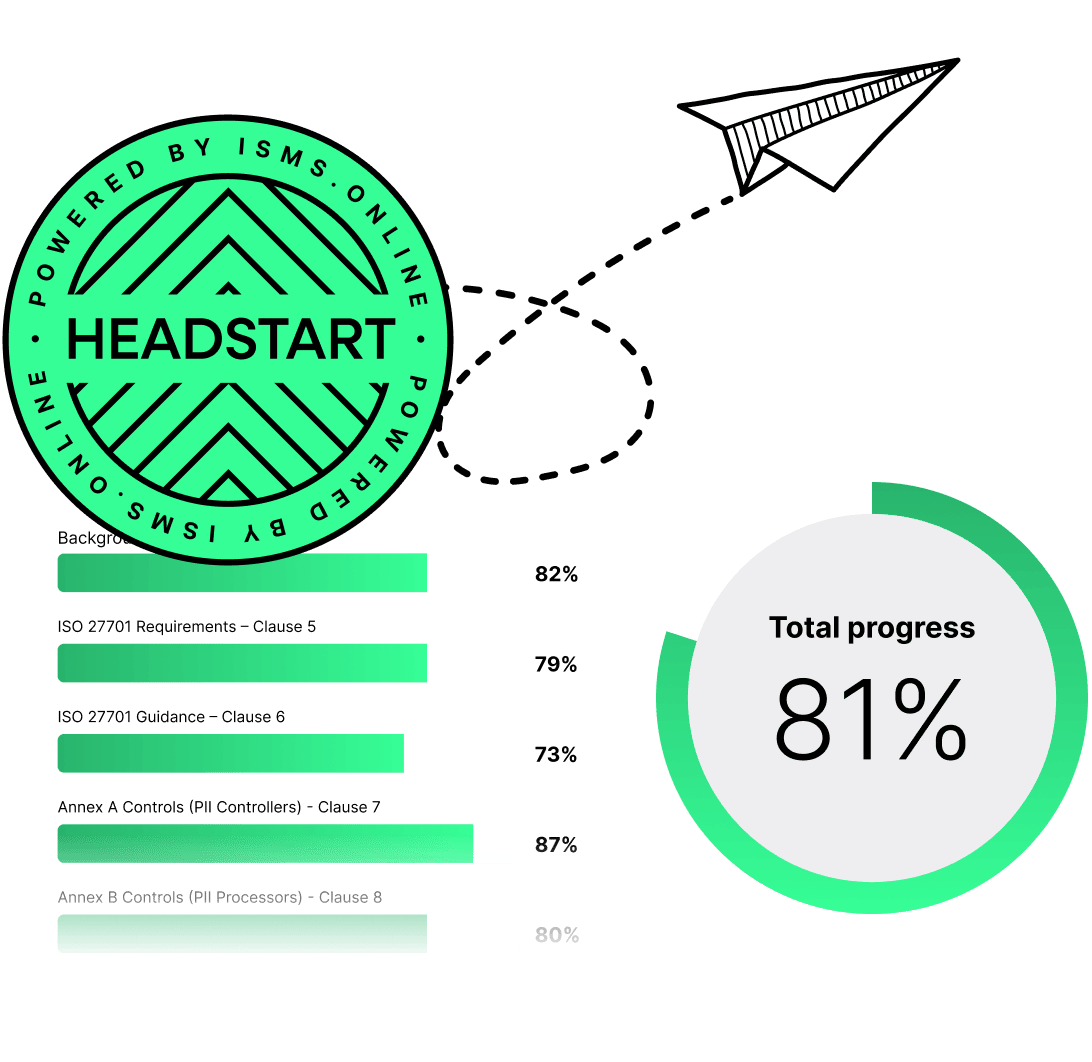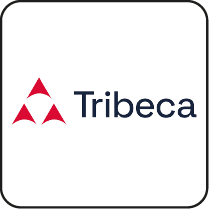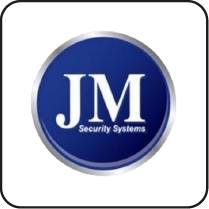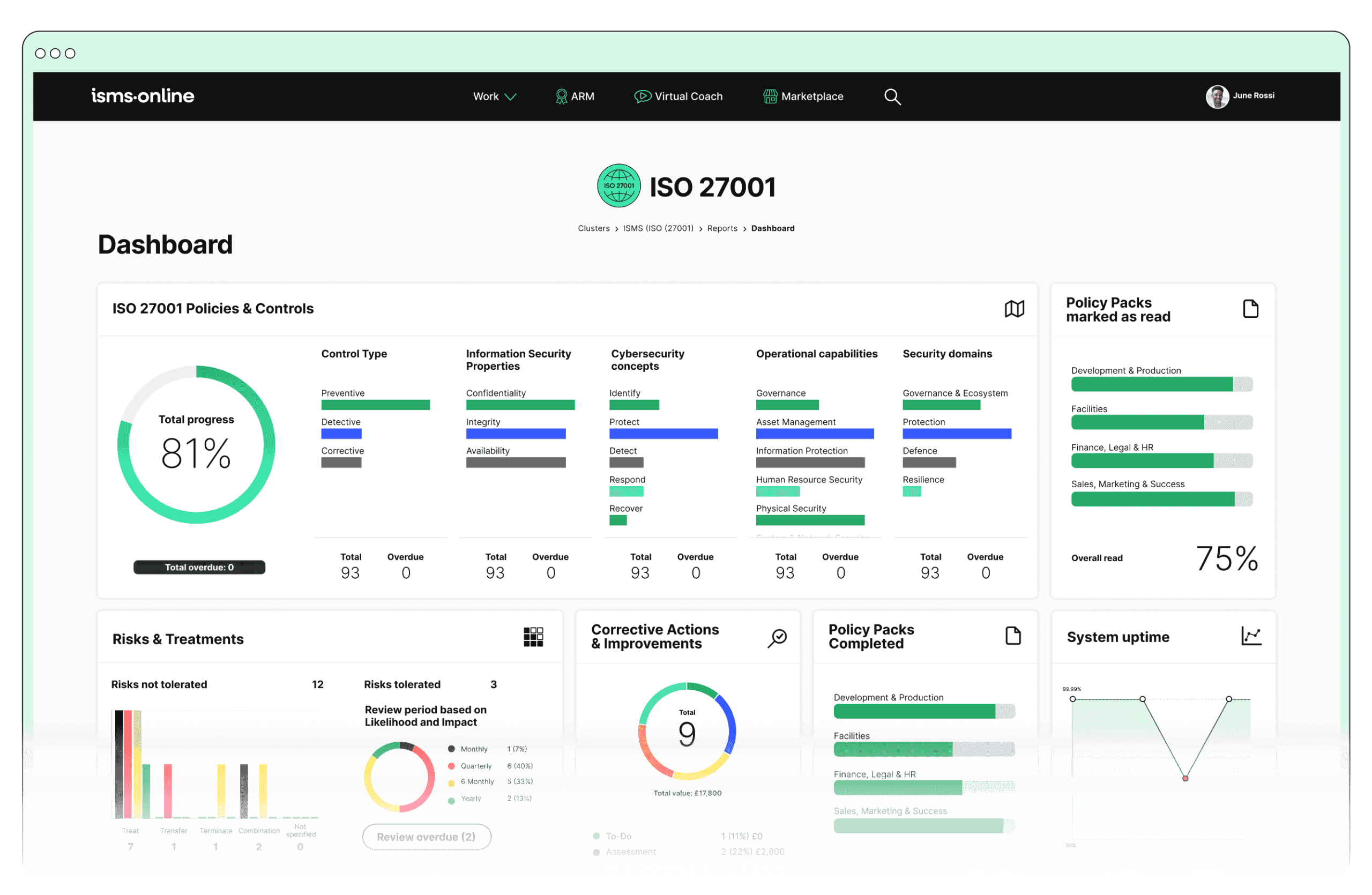Why Is Documenting Audit Findings Essential?
Every robust Information Security Management System hinges on tangible proof rather than hopeful intention. As a security or compliance leader, your career and your company’s resilience depend on what you can prove—on demand—to your auditors, your board, and your team. Clause 9.2 of the ISO 27001 standard enshrines this: you must document the facts, not just your good intentions.
Strong documentation isn’t bureaucracy—it’s the architecture of trust. Every finding, action, nonconformity, and remedial step, meticulously traced and explicitly mapped, is your real defence against evolving risks and regulatory pressure. When findings are unambiguously tied to evidence and ownership, you transform audits from last-minute fire drills into consistently confident attestation.
The risk isn’t missing a compliance box—it’s missing the moment to prove you were always ready.
Internal Audit Reports: Backbone of a Defensible ISMS
- Delivers factual scope, coverage, and methodology to satisfy certification demands.
- Provides a living record that stands up to peer scrutiny, market turbulence, and future audits.
- Matches every claim to verifiable, version-tracked evidence—not a single unresolved gap.
The Cost of Inconsistency
Manual audit documentation fractures over time—key evidence disappears into email threads, corrective actions get orphaned in forgotten spreadsheets. The outcome: increased audit nonconformities, staff fatigue, and regulatory scrutiny.
Our platform addresses these traps by engineering a continuous audit log, version control for every policy, and seamless cross-referencing. Your findings don’t remain “next steps” forever—they close, they record, and they build a provable legacy.
Move beyond the risk of reactive defence; position your team as the benchmark other CISOs envy.
Book a demoHow Do You Prepare and Structure Your Audit?
Proper audit planning separates accidental compliance from the deliberate, systematic kind. Audit reports that withstand scrutiny do not grow out of haphazard sample selection or poorly defined scope. They are architected.
Your preparation begins with clarity:
- Scope must be finite and transparent.: Define ISMS boundaries, asset domains, business units, and all included frameworks up front.
- Auditor assignments need to be documented and defensible.: Independence is a credibility multiplier.
- Methodology matters.: What evidence forms will you accept: logs, interviews, configuration data? How will you handle sampling versus 100% coverage?
Turning Preparation into Performance
- Audit calendars must sync with operational priorities—never let a key system go unaudited because “no one was free.”
- Every audit method and rationale should be justified ahead of time, documented, and reviewable.
Comparative Insight: Audit Prep by Maturity
| Audit Maturity | Scope Definition | Auditor Assignment | Methodology Sophistication | Performance Outcome |
|---|---|---|---|---|
| Ad-hoc | Implicit | Assumed, adjoined | Vague, incomplete | Last-minute scramble |
| Repeatable | Formal, documented | Scheduled, tracked | Sampled, benchmarked | Predictable, passable |
| Integrated | Dynamic, risk-based | Role-based, certified | Adaptive, matched to controls | Proactively audit-ready |
Only at the integrated level does your audit process map to continuous compliance, enabling deep risk insight and minimal last-minute surprises.
You do not win compliance by overworking heroes; you win it by making the right moves habitual for everyone.
Advance your methodology; let operational evidence be your safety net, not your stress test.

ISO 27001 made easy
An 81% Headstart from day one
We’ve done the hard work for you, giving you an 81% Headstart from the moment you log on. All you have to do is fill in the blanks.

What Strategies Ensure Comprehensive Documentation Review?
Documentation review is more than paperwork—done right, it’s the process by which your ISMS is kept agile, robust, and inspection-proof. Failing to systematically link evidence exposes your entire security posture. When every compliance officer, auditor, or manager can trace every link from finding to root evidence, compliance becomes both a reality and a shield.
Centralising, Linking, Controlling
- Gather control policies, procedures, checklists, and logs in a single version-controlled environment.
- Link every finding and each piece of evidence to explicit ISO or Annex L requirements—*no exceptions, no lost context*.
- Mandate change tracking on all crucial documents; the provenance of each update is non-negotiable.
Document Management Before and After ISMS.online Integration
| Attribute | Manual Management | Digitally-Centralised |
|---|---|---|
| Version Control | Inconsistent | Automatic |
| Evidence/Finding Linkage | Manual, error-prone | Seamless, robust |
| Change Tracking | Decentralised | Fully auditable |
| Search/Finding Time | High, unpredictable | Minimal, real-time |
This shift is not optional—it’s operational survival. Auditors today demand documentary proof, audit logs, and who signed off on each change. If your reporting tools don’t support it, your credibility slips.
Security is trust you can prove; documentation is the only currency that holds up under interrogation.
Upgrade your evidence management; your audit cycle should drive progress, not panic.
How Can You Secure and Validate Audit Evidence Effectively?
Quality of evidence determines the outcome and credibility of audits. If you accept “best case” samples or template answers, your organisation inherits invisible exposure. Effective compliance leaders demand:
- Strategic sampling plans: —covering processes, time periods, and asset types—chosen for exposure, not convenience.
- Structured interviews: —not mass emails—capture deep, real-world control effectiveness.
- Cross-validation: with external data (regulatory/third-party feedback), revealing gaps you never saw coming.
Executing Verification: From Input to Audit Trail
- Timestamped, user-attributed evidence entries close loopholes left by spreadsheets or legacy document stores.
- Automate as much mapping from source evidence to findings as possible, so that review reveals proof rather than inconvenience.
Sampling and Validation Steps for Internal Audit Evidence
| Step | Rationale |
|---|---|
| Define inclusion/exclusion | Avoid bias |
| Schedule periodic pull | Catch changes, not one-time anomalies |
| Document all exceptions | Exceptions left unexplained become findings |
| Integrate validation checks | Prove integrity, not just presence |
It isn’t about how much evidence you collect—it’s about collecting what matters and defending it when challenged.
Your process must operate as if the next scrutiny comes from a breach review, not just certification. Build now for urgency you hope never arrives.

Free yourself from a mountain of spreadsheets
Embed, expand and scale your compliance, without the mess. IO gives you the resilience and confidence to grow securely.

How Do You Transform Collected Data Into Actionable Audit Insights?
Raw evidence, even perfectly gathered, is waste unless converted into action. Actionable insights require:
- Comprehensive mapping of findings to ISO controls, clarifying whether an issue is systemic or isolated.
- Categorization that goes beyond “nonconformity” and “opportunity” to include issue criticality, probable impact, and speed needed for closure.
- Each major nonconformity must trigger an explicit corrective action, an owner, and a close date—build automatic escalations to ensure compliance.
Insight as Leverage
If your post-audit reports repeatedly show the same types of gaps, your system is signalling lack of corrective evolution—not a culture of learning. ISMS platforms should supply built-in analytics to surface these trends before they become recurring audit fails.
From Raw Data to Operational Maturity
- Use audit dashboards to turn trendline data into actionable plans for department heads, IT leads, and process owners.
- Enable cross-departmental review; siloed analysis is a bottleneck for risk mitigation.
You become truly audit-ready the moment every team sees data not as a compliance burden, but as a lever for measurable improvement.
When analysis results in action, audit reporting transforms from reactive governance into business foresight.
How Should You Structure Your Audit Report For Maximum Clarity?
Auditors don’t judge intent—they trace outcomes. Start your report with an executive summary that distils key findings, compliance status, and immediate action items in accessible language. Break the full report down into discrete segments:
- Introduction: Scope, objectives, covered assets, and frameworks
- Methodology: Audit methods and rationale, sampling rules, and controls reviewed
- Findings: Each mapped to regulatory clause and linked evidence
- Recommendations: What must change, by whom, and when
- Appendix: Supplementary documents—no critical information buried
Digital Report Structuring: From Confusion to Confidence
Integrated platforms like ISMS.online empower you to embed clickable links to evidence, change logs, or unresolved findings—minimising risk of oversight. You move from static PDFs or Word files to live, reviewable, and updatable ISMS records.
| Section | Aim | Best Practices |
|---|---|---|
| Executive Summary | Context, snapshot, status | Data-based, risks spotlighted |
| Findings | Full list, clause-reference, evidence | Link to action and owner |
| Recs/Action Plan | Closure, responsibility, deadline | Escalate urgent items |
| Audit Log | All changes, sign-off timestamps | No retroactive edits |
A leadership team is only as agile as the evidence they can deploy and defend—instantly.
Audit reports written this way become living blueprints for growth, improvement, and leadership buy-in.

Manage all your compliance, all in one place
ISMS.online supports over 100 standards and regulations, giving you a single platform for all your compliance needs.

How Can You Effectively Summarise and Communicate Audit Outcomes?
Board-level summaries must eradicate ambiguity and surface only what requires leadership attention. The executive summary should not only capture open gaps and previous period progress, but signal a culture of persistent improvement.
The Power of Focused Summarization
- Open with a numeric snapshot: how many audits completed, areas sampled, actions closed, unclosed risks.
- Spell out where intervention is required—not just what happened.
Strong summaries use visuals: concise risk heatmaps, action trend graphs, and prioritised lists rather than text blocks.
Executives react to numbers, not stories. Show results—then show movement.
Elite Executive Reporting Table
| Metric | Current Audit | Previous Audit | Delta / Trend |
|---|---|---|---|
| Major Nonconformities | 2 | 4 | Down (improved) |
| Unclosed Risks | 3 | 5 | Down (improved) |
| Evidence Gaps | 1 | 2 | Down (improved) |
| Actions Closed (%) | 90% | 70% | Up (progressing) |
Always focus attention on leadership’s unique concern: what exposes organisational risk, reputation, or compliance status—now and in the imminent future.
Can You Afford to Rely On Manual Audit Processes?
While manual systems feel familiar to most mid-size teams and compliance leads, every trendline—cost, time, and incident data—says your instincts should now be backed by a digital platform.
Competitive Edge Through Digital Compliance
By digitising your audit workflow, you achieve:
- Continuous readiness—your ISMS is never “between cycles”
- Measurable reduction in audit finding resolution times
- Reduced personal fatigue and greater resilience for your compliance team
True operational leadership is giving your team a platform that lets them focus on insight, not information scavenging.
Key Gains from ISMS.online Adoption
| Category | Before Digital | After Digital |
|---|---|---|
| Audit Cycle Duration | Weeks, variable | Days, consistent |
| Data Traceability | Partial, manual | End-to-end, traceable |
| Preparation Stress | High | Minimal |
| Evidence Reliability | Prone to error | Near-perfect |
Transform your audit process now; your leadership will be defined not only by the results you defend, but by the groundwork you set for successors.
Guard Your Legacy By Owning Your Audit Readiness
You earn trust when every report, every finding, and every action you take stands up to scrutiny years after the pressure fades. Compliance officers and CISOs distinguish their organisations by the degree of evidence, insight, and readiness they can showcase at any checkpoint. You’re not filling out a report—you’re wielding operational mastery as a leadership signal. Align your team and technology accordingly; let your next audit prove you’re setting the pace—not following it.
Frequently Asked Questions
Why does documenting internal audit findings distinguish compliance that survives from compliance that fails?
Documenting audit findings is your system’s litmus test: if you can’t produce auditable records on demand, you’re managing uncertainty, not compliance. ISO 27001 Clause 9.2 doesn’t care about intent—it demands evidence.
A credible audit system precisely aligns findings, risk context, and corrective action so nothing gets lost in translation, or worse, buried in legacy spreadsheets. When leadership or a third-party auditor requests proof, you’re expected to deliver not stories, but explicit, time-stamped, source-linked records showing who found what, when, and how it was resolved.
Every scattered action or unlinked evidence block erodes both trust and operational leverage. When your audit trail is stitched together post-hoc, risk accumulates quietly until it erupts in fines, failed bids, or board-level embarrassment. The market trusts firms that control their evidence; systems like ISMS.online become reputation compounds, where every check is a proof point visible to those who matter most.
Audit Evidence—Expectations vs. Consequences
| Audit Requirement | Met | Missed |
|---|---|---|
| Traceable evidence | Regulatory peace of mind | Protracted audits, tense boards |
| Linked corrective acts | Board confidence, repeat wins | Repeat findings, brand erosion |
| Version control | No surprises, fast approval | Chaos, delays, duplicated labour |
Audit records are not about hindsight—they are about setting your future price in trust and leadership.
How do you prepare and structure your internal audit to reveal what matters—not just what’s easy?
You avoid last-minute compliance trauma by architecting your audit before anyone logs an action. Start by nailing down scope boundaries—systems, departments, processes—and commit, in writing, to which regulatory hooks (Annex L, 27001, GDPR) are being tested.
Select auditors who bring both operational distance and subject literacy, always keeping documented qualifications and conflict declarations on file.
Design your methodology before a single evidence request goes out: who interviews whom, which controls trigger sampling, and what triggers automatic risk escalation when breached.
Build on a calendar, not a memory. When your process surfaces repeat findings or late closures, elevate those to management early—with evidence, not apology.
Key Preparation Moves:
- Schedule audits around operational cycles and business inflexion points; “too busy” is a forecasted risk, not a reason for postponement.
- Review last-cycle gaps and unresolved actions before building the new plan.
- Design dynamic, living checklists—kills the habit of static, copy-paste reports.
Audit prep, led this way, shifts compliance from panic reaction to clarified, owned business function—knocking risk out before it can compound.
What documentation review practices actually prevent audit regret, not just create busywork?
Effective documentation review rejects the carton-box approach—evidence is only as strong as its context and connection.
Centralise every policy, procedure, manual, and log so you can inject version control and instant linkage. Gone are the days where audit evidence rests in siloed team folders or scattered email threads.
Tie every finding to a digital reference—when risk is discovered, both the trigger and owner should be self-evident.
Implement periodic review cycles: no document is “evergreen.” Evidence goes stale, ownership changes, and processes drift. Your ISMS must alert you, not auditors, when a source is out-of-date or an action unlinked.
Documentation Review—Reactive vs. Predictive
| Approach | Outcome for Compliance Officer |
|---|---|
| Siloed, ad-hoc reviews | Recurring findings, high stress |
| Digitised, linked review | Fast closure, role clarity, trust |
The simplest way to gauge audit resilience: how fast can a third-party verify every closure from record alone? If that answer is “less than 30 seconds per item,” you’re operating in elite company.
How can you ensure your audit evidence stands up to board, auditor, and real-world attack?
Your sampling and evidence collection strategy is either exposing risk, or it’s exposing you.
Don’t rely on the “easy” evidence—sample widely across user types, control domains, and event triggers. Test negative scenarios and shift sampling as threat landscapes change.
Structure interviews that reveal not just what’s being claimed, but what’s being delegated and what’s being missed. Supplement direct sampling with peer-review controls and external signals (client feedback, security incidents, shop-floor sentiment).
Evidence Validation Blueprint:
- For every material finding, require two forms of evidence—documented log and subject interview.
- Assign sampling quotas to teams beyond audit targets—see if declared practice matches ground truth.
- Exploit automation: force timestamped, user-attributed collection, and inject random spot-checks.
The evidence you trust is the evidence you can challenge—internally or under audit, without fear.
When evidence is both diverse and validated, your reports become weapons, not warnings.
How do you turn ordinary audit findings into momentum—the currency governance actually values?
Raw findings lose authority if left as “to-dos.” All operational leverage comes from structuring them into categorised, tracked, and reviewed actions.
Major nonconformities demand high-urgency corrective plans. Assign single-point accountability and wrap closure in audit trail; minor lapses need timeline tracking to prevent systemic drift.
Map every finding to both a clause and a risk context; findings without context become empty data.
Review prior cycles for evidence of repeat risks or improvement—show that your process deletes weaknesses, not just lists them.
Finding Pathways—Static vs. Dynamic Governance
| Finding Handling | Board Impression |
|---|---|
| Data-only (“noted”) | Underwhelmed, risk-dull |
| Context-tracked | Engaged, trust-enhanced |
| Action-closed | Decisive, respected |
Audit leadership earns its status by closing the gap between data and decision—compounded every quarter.
The sum of these cycles? Governance that works as advertised—proof that compliance is a value multiplier.
How do you structure and communicate audit outcomes so the right people act, not just file away another report?
Round off your audit process by making outcome communication effortless for your stakeholders.
Start executive summaries with impact counts—how many issues, how many moves, where’s the pulse. Use visual aids where signal can be lost in words—simple bar or trendline charts, colour-coded risk maps.
Ensure every open risk and required owner is called out by name.
Integrate outcome reports directly into your operational dashboards where leaders already live—eliminating delay and miscommunication.
Audit Report Structure—Signal vs. Noise
| Section | Function |
|---|---|
| Executive Summary | Snapshot, future signal |
| Methodology | Defensibility, reviewability |
| Detailed Findings | Accountability, closure |
| Recommendations | Momentum, forward action |
| Appendices | Data backing, traceability |
At minimum, audience-specific summaries should set up next steps and confirm trajectory. Done right, every report underlines your organisation’s claim to industry leadership with silent confidence.
An exceptional compliance officer isn’t known for finding problems, but for the way their reports mobilise a culture of closure and accountability.









